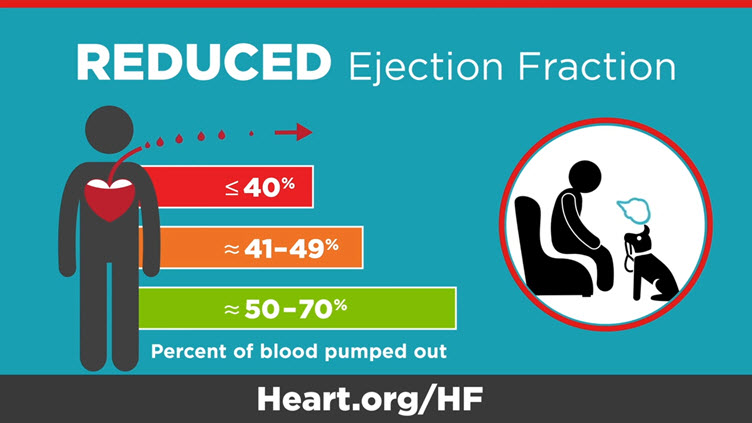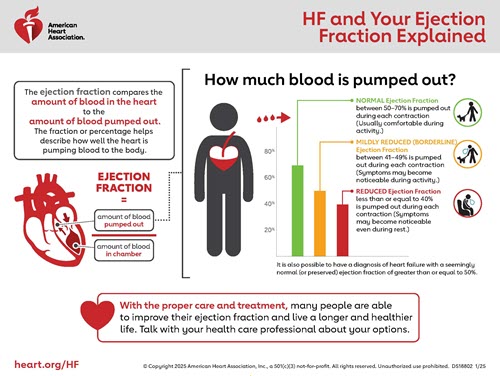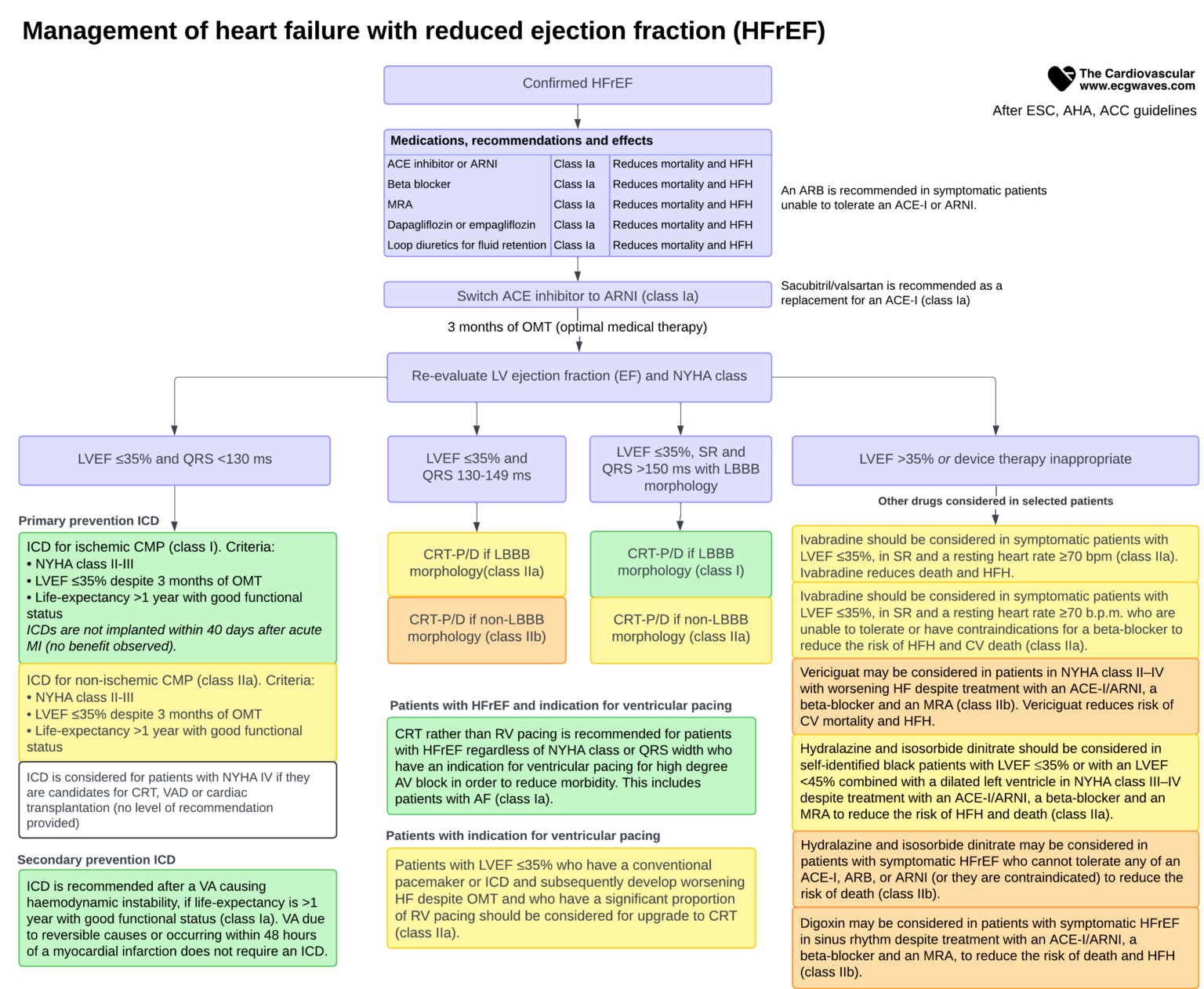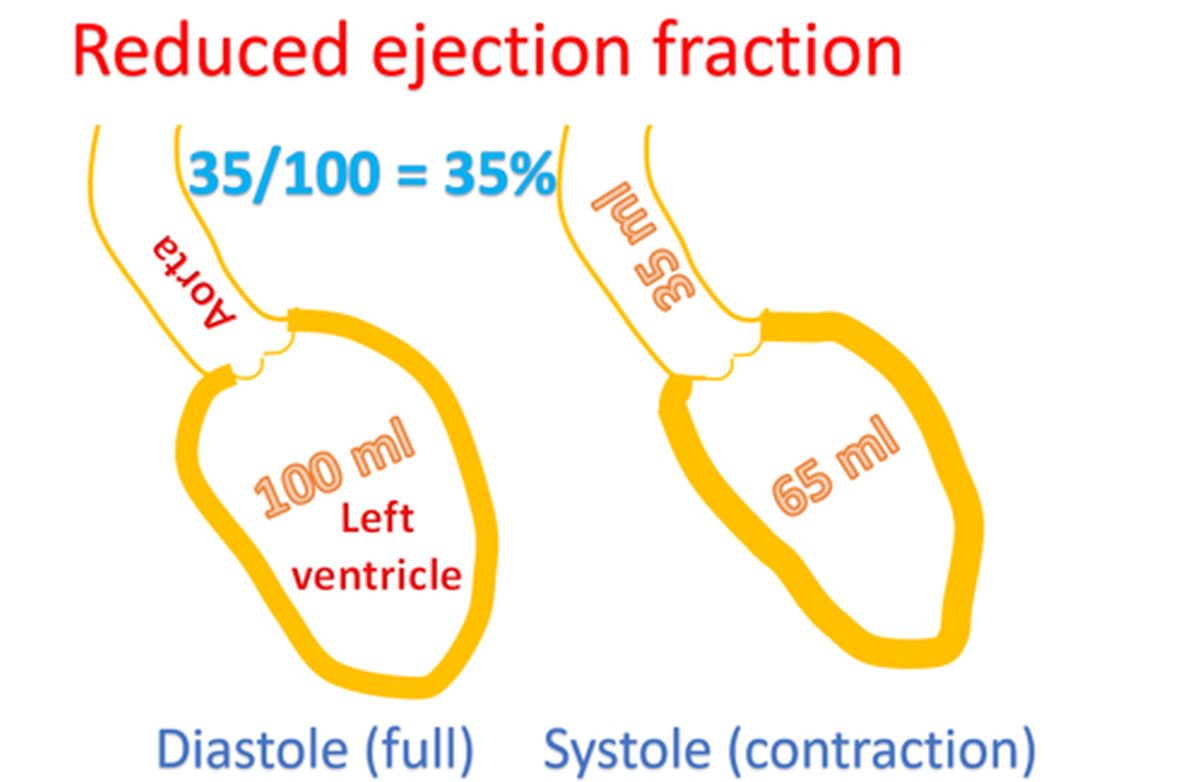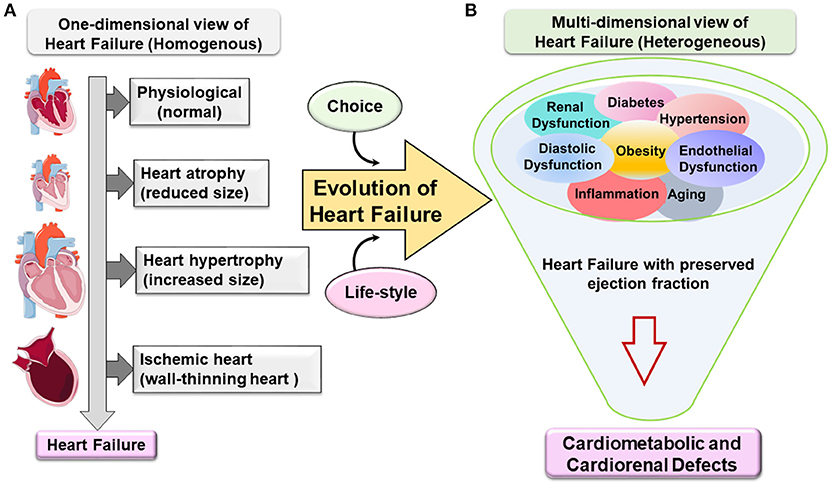Chronic Heart Failure With Reduced Ejection Fraction Icd 10
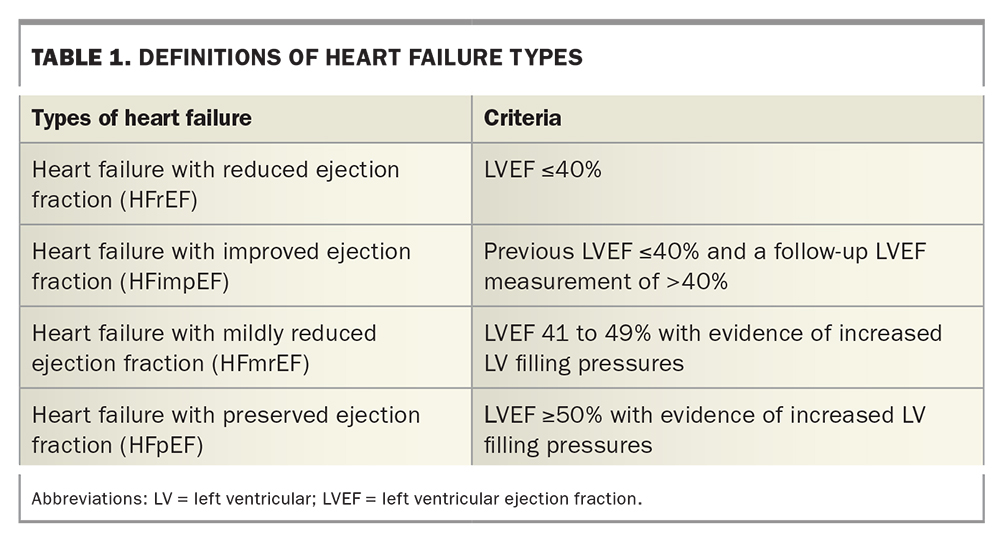
The human heart, a tireless engine, falters for millions, leading to the debilitating condition known as chronic heart failure. But navigating the complexities of diagnosis and treatment is further complicated by the language used to classify this illness. One crucial code, the ICD-10, acts as a universal translator, yet its application, particularly in cases of chronic heart failure with reduced ejection fraction (HFrEF), can significantly impact patient care, research, and healthcare resource allocation.
This article delves into the significance of the ICD-10 code for chronic heart failure with reduced ejection fraction, examining its impact on clinical practice, data collection, and the future of heart failure management. It explores how this seemingly simple code serves as a linchpin in a vast network of medical information, influencing everything from reimbursement policies to the development of new therapies.
Understanding Chronic Heart Failure and Ejection Fraction
Heart failure is a chronic, progressive condition in which the heart muscle is unable to pump enough blood to meet the body's needs. This can lead to a buildup of fluid in the lungs and other tissues, causing shortness of breath, fatigue, and swelling.
Ejection fraction (EF) is a measurement of how well the left ventricle (the heart's main pumping chamber) is pumping blood out to the body. It is expressed as a percentage. A normal EF is generally between 55% and 70%.
HFrEF, also known as systolic heart failure, occurs when the heart muscle is weak and cannot contract effectively, resulting in a reduced ejection fraction (typically defined as an EF of 40% or less). This means that less blood is pumped out of the heart with each beat.
The Role of ICD-10 Coding
The International Classification of Diseases, Tenth Revision (ICD-10) is a globally recognized diagnostic coding system used to classify and code all diagnoses, symptoms, and procedures. It is essential for accurate record-keeping, statistical analysis, and billing in healthcare.
In the context of heart failure, the ICD-10 provides specific codes to differentiate between various types of heart failure, including HFrEF, heart failure with preserved ejection fraction (HFpEF), and unspecified heart failure. The accurate assignment of these codes is paramount.
The ICD-10 code for HFrEF is crucial for identifying patients with this specific type of heart failure. This allows for targeted treatment strategies, research studies focusing on HFrEF, and accurate tracking of the prevalence of this condition.
Impact on Clinical Practice and Research
Accurate ICD-10 coding ensures appropriate treatment pathways for patients with HFrEF. For example, knowing a patient has HFrEF guides clinicians towards specific medications proven effective in this subtype, such as ACE inhibitors, beta-blockers, and mineralocorticoid receptor antagonists (MRAs).
Furthermore, precise coding facilitates research efforts aimed at understanding the underlying mechanisms of HFrEF and developing novel therapies. Clinical trials often rely on ICD-10 codes to identify and recruit eligible participants with HFrEF.
Data collected through ICD-10 coding contributes to epidemiological studies that track the incidence, prevalence, and mortality rates associated with HFrEF. This information is vital for public health planning and resource allocation.
Challenges and Considerations
Despite its importance, challenges exist in the accurate and consistent application of ICD-10 codes for HFrEF. Clinicians must carefully evaluate patients' ejection fraction measurements and other clinical findings to assign the correct code.
Variations in coding practices can arise due to differences in interpretation or documentation. This can lead to inconsistencies in data and potentially impact the accuracy of research findings and clinical decision-making.
Furthermore, the evolving understanding of heart failure subtypes and the introduction of new diagnostic tools necessitate ongoing updates and refinements to the ICD-10 coding system. This ensures that the codes accurately reflect the current state of medical knowledge.
The Future of HFrEF Management and ICD-10
The future of HFrEF management will likely involve more personalized and targeted approaches. Advances in genomics and proteomics are paving the way for identifying specific biomarkers that can predict treatment response and risk stratification.
ICD-11, the latest revision of the International Classification of Diseases, offers enhanced granularity and improved coding specificity for heart failure. Its widespread adoption will further refine data collection and analysis, leading to a better understanding of HFrEF.
As healthcare systems increasingly rely on electronic health records and data analytics, the accurate and consistent application of ICD-10 (and eventually ICD-11) codes will become even more critical. This will enable more effective monitoring of HFrEF patients, earlier detection of complications, and improved outcomes.
"Accurate ICD-10 coding is the cornerstone of effective heart failure management, impacting everything from clinical decision-making to public health surveillance," says Dr. [Physician Name], a leading cardiologist at [Hospital Name].
The ICD-10 code for chronic heart failure with reduced ejection fraction is more than just a string of numbers and letters. It is a vital tool that empowers clinicians, researchers, and policymakers to improve the lives of millions affected by this debilitating condition. Continued efforts to ensure accurate coding practices and to adapt to the evolving landscape of heart failure management will be essential in the years to come.

